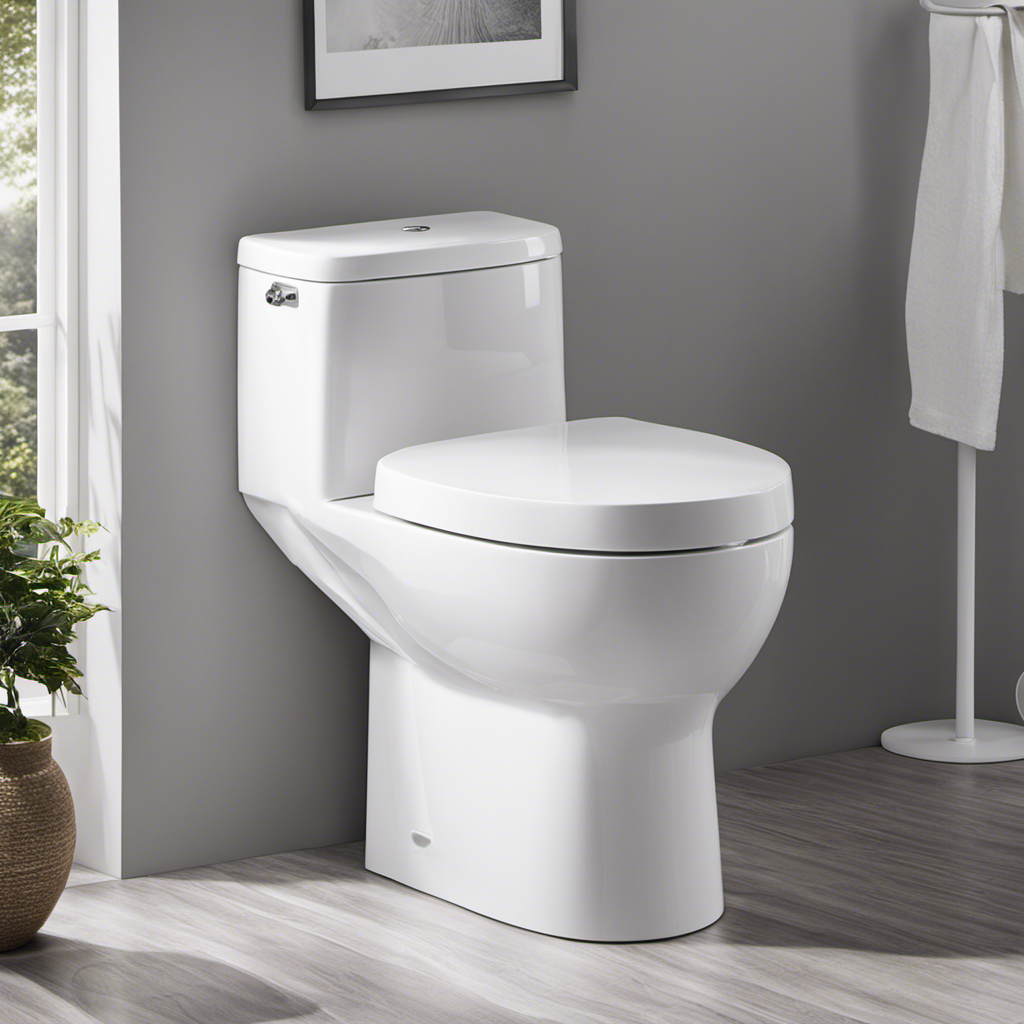Are you tired of dealing with a wobbly toilet that just won’t stay in place? It’s like trying to balance on a tightrope, always teetering on the edge of disaster.
But fear not! In this article, we’ll show you how to raise your toilet flange, giving your throne the stability it deserves. With a few simple steps and the right tools, you’ll be able to tackle this DIY project with confidence.
So let’s dive in and put an end to that wobbly toilet dance once and for all!
Key Takeaways
- The toilet flange connects the toilet to the drain pipe and ensures proper waste removal.
- Correct installation is important for a secure and leak-free connection.
- Use a measuring tape to assess the height of the flange and ensure there is enough clearance between the flange and the finished floor.
- Flange extenders can be used to raise a low flange and provide the necessary elevation for a secure toilet installation.
Understanding the Toilet Flange
The toilet flange is a crucial component that connects the toilet to the drain pipe. It is responsible for creating a tight seal and ensuring proper waste removal.
When it comes to toilet flange installation, it is important to follow the correct steps to ensure a secure and leak-free connection.
Start by removing the old flange, cleaning the area, and inspecting the drain pipe for any damage.
Next, position the new flange over the drain pipe and secure it using screws or bolts. Make sure it is level with the floor and tightly sealed.
Troubleshooting toilet flange problems may involve checking for any cracks or breaks, replacing damaged parts, or adjusting the flange height if necessary.
Remember to always consult a professional if you are unsure or encounter any difficulties.
Assessing the Height of the Flange
First, it’s important to check how high the flange is positioned. To assess the height of the flange, follow these steps:
-
Use a measuring tape: Measure the distance between the floor and the top of the flange. This will give you an accurate measurement of the flange’s height.
-
Check for proper clearance: Ensure that there is enough clearance between the flange and the finished floor. The flange should be slightly above the floor level to allow for a proper seal.
-
Avoid common mistakes: One common mistake is neglecting to measure the flange height before making any adjustments. Another mistake is not accounting for the thickness of the new flooring when raising the flange.
-
Consider using flange extenders: If the flange is too low, flange extenders can be used to raise it to the appropriate height. These extenders are easy to install and can provide the necessary elevation for a secure toilet installation.
Tools and Materials Needed
To accurately assess the height of the flange, you’ll need a measuring tape and ensure there is enough clearance between the flange and the finished floor.
When it comes to toilet flange installation, having the right tools and materials is crucial. Here’s what you’ll need:
-
Measuring tape: This will help you determine the height of the flange accurately.
-
Adjustable wrench: You’ll need this to loosen and tighten the bolts that secure the toilet to the flange.
-
Wax ring: This is a crucial component that creates a watertight seal between the toilet and the flange.
-
Toilet flange extender: If the flange is too low, you’ll need an extender to raise its height and ensure a proper connection.
-
Plumber’s putty: This will help create a tight seal around the base of the toilet.
Step-by-Step Process of Raising the Flange
After measuring the height of the flange, you’ll need to use a toilet flange extender if the flange is too low. Here are some common mistakes to avoid when raising a flange and some DIY alternatives for raising a toilet flange:
-
Not properly cleaning the area around the flange before starting the process. Make sure to remove any debris or old wax ring residue to ensure a proper seal.
-
Over-tightening the bolts. This can cause the flange to crack or break. Tighten the bolts snugly, but not excessively.
-
Using the wrong materials. Make sure to use a toilet flange extender that is compatible with your existing flange and toilet.
-
Neglecting to replace the wax ring. It is essential to replace the wax ring when raising the flange to ensure a watertight seal.
DIY alternatives for raising a toilet flange include using PVC pipe or a double wax ring. However, it’s recommended to consult a professional plumber for the best results.
Tips and Considerations for a Successful Flange Raise
When considering a flange height adjustment, it’s important to assess the condition of the surrounding area and choose the appropriate materials.
One of the most common mistakes people make during a flange raise is not properly inspecting the area. Before starting the adjustment, check for any leaks, cracks, or other damage that may affect the integrity of the flange.
It’s also crucial to choose the right materials for the job. Use a sturdy and durable material, such as PVC or cast iron, to ensure a long-lasting and secure flange.
Troubleshooting tip: If the flange is uneven or wobbly after the adjustment, try using shims or a flange extender to stabilize it. Remember to follow the manufacturer’s instructions and seek professional help if needed.
Conclusion
In conclusion, raising a toilet flange is a task that requires careful assessment and precise execution. With the right tools and materials, you can successfully elevate the flange to the desired height.
Remember to take into consideration the tips and considerations mentioned earlier to ensure a successful outcome. As you tighten the bolts and secure the flange, imagine the satisfaction of a perfectly aligned toilet, ready to serve you and your loved ones.
Your bathroom will be transformed into a sanctuary of comfort and functionality. Happy flange raising!










